Hyundai IONIQ 2021 review: A fully electric hatchback

Summary
Quick Verdict: The Hyundai IONIQ provides impressive performance, as well as a planet-friendly electric engine. Which is just as well, given it’s a fair step up in price compared to the rest of the Hyundai range. I do wish it felt a little more luxurious, but it’s a great looking car and feature-rich.
- Fun and zippy drive
- Premium model is feature-rich
- Sexy, pseudo-hatchback design
- Would have preferred 1 model with all the features
- Interior doesn’t have a luxury feel
- Tight fit for big humans
The future is here for the hatchback, but is the fully electric Hyundai IONIQ as enjoyable to drive as it is efficient?
I love the sound of a V8 roaring down Conrod Straight at Mount Panorama as much as the next bloke, but you know what I love even more? The planet. And not spending half my wage on petrol. The future of automobiles lies in electricity and if the recent run of natural disasters is anything to go by, that future cannot come soon enough.
For those who haven't been keeping up with the electronic vehicle movement, it's not all about the Tesla anymore. There's been an influx of affordable hybrids recently, such as the MG HS PHEV and Volvo S60. But it's the all-electric vehicles that are the most exciting. From the bizarre Cybertruck to the Volvo Concept Recharge, change is afoot.The Hyundai IONIQ isn't trying to ruffle feathers like those examples. It just wants to be your classic commuter's hatchback, only fully electric. My worry going into this review was that being efficient meant sacrificing performance or comfort – or both. Was I right to worry?
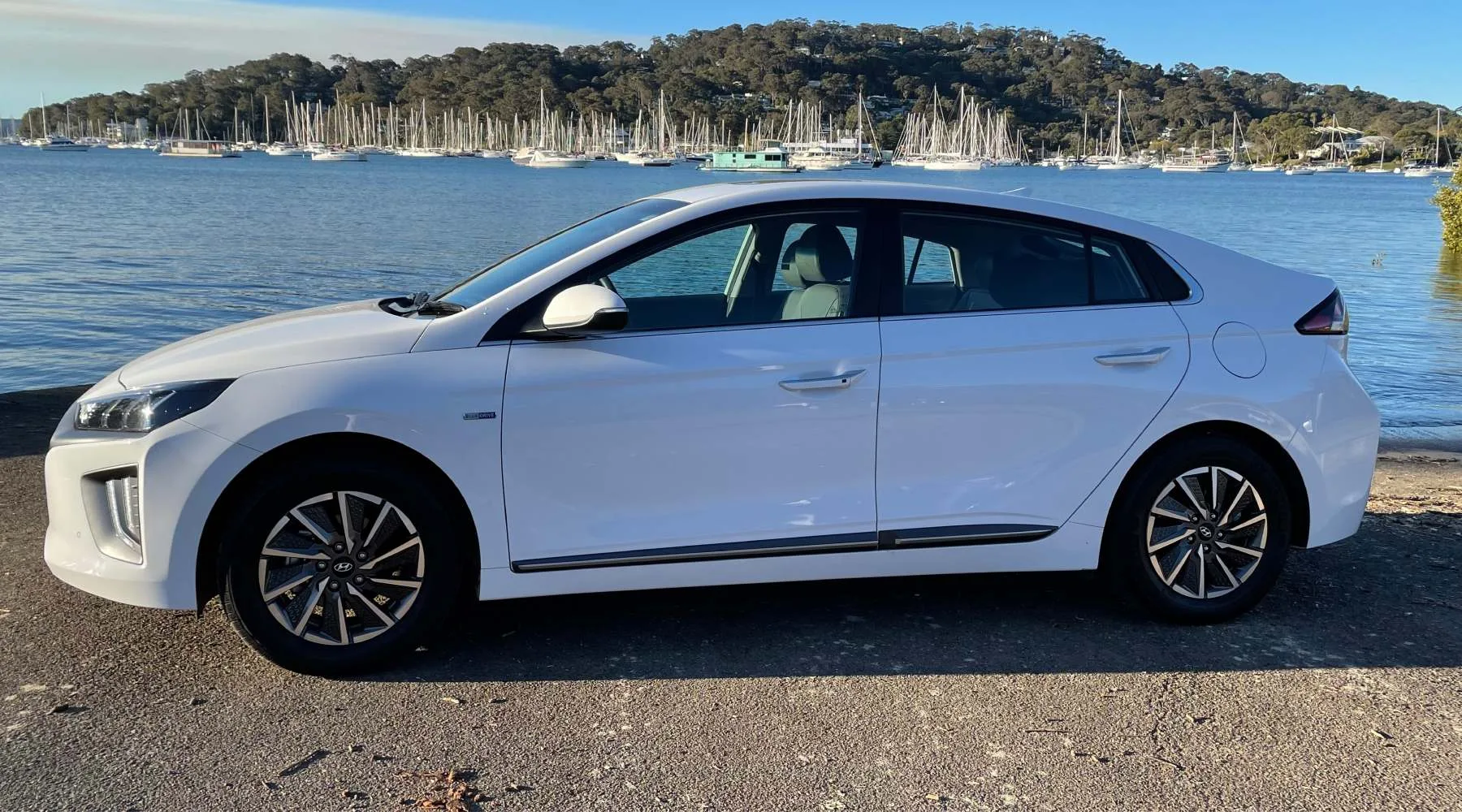
Features
Let's get the lay of the land. The Hyundai IONIQ's electric engine can deliver 100kW of power and 295Nm of torque. This is comparable to the i30 and Kona range – a little less power but more torque. Under the bonnet, the 38.3kWh lithium-ion polymer battery will get you an advertised 311km per "tank." However, that's variable depending on how you drive, but also how you harvest. I will go into this in more detail later.
In real metrics, the battery is just about enough to get you from Sydney to Newcastle and back. It can definitely get you from Sydney to Canberra.
At a DC fast-charging station, you can get an 80% top-up (roughly 250km) in just under an hour. Otherwise, it will take 6 hours to fully charge at home or at the office on AC. Obviously, this is where the car's worth to your use-case needs to be considered. That's perfectly fine for general commuting or a week's worth of delivering the kids to school and sport, but not so great for long road trips.
You'd have at least 3 forced 1-hour stops to get from Sydney to the Gold Coast (or Melbourne), for example.
Continuing the revolution, the Hyundai IONIQ does away with a typical transmission and opts for a single speed reduction gear system. There are 4 drive modes, too – ECO+, ECO, Normal and Sport. But disappointingly, it opts for a torsion beam axle rear suspension, unlike the multi-link suspension found in the higher-end Kona and i30 models.
Strangely, the car weighs more than the i30s and Konas at around 1.5T – you'd think it would be far lighter without an engine. In terms of security, you can expect an 8-year warranty on the battery and a 5-year unlimited kilometre warranty on the vehicle itself.
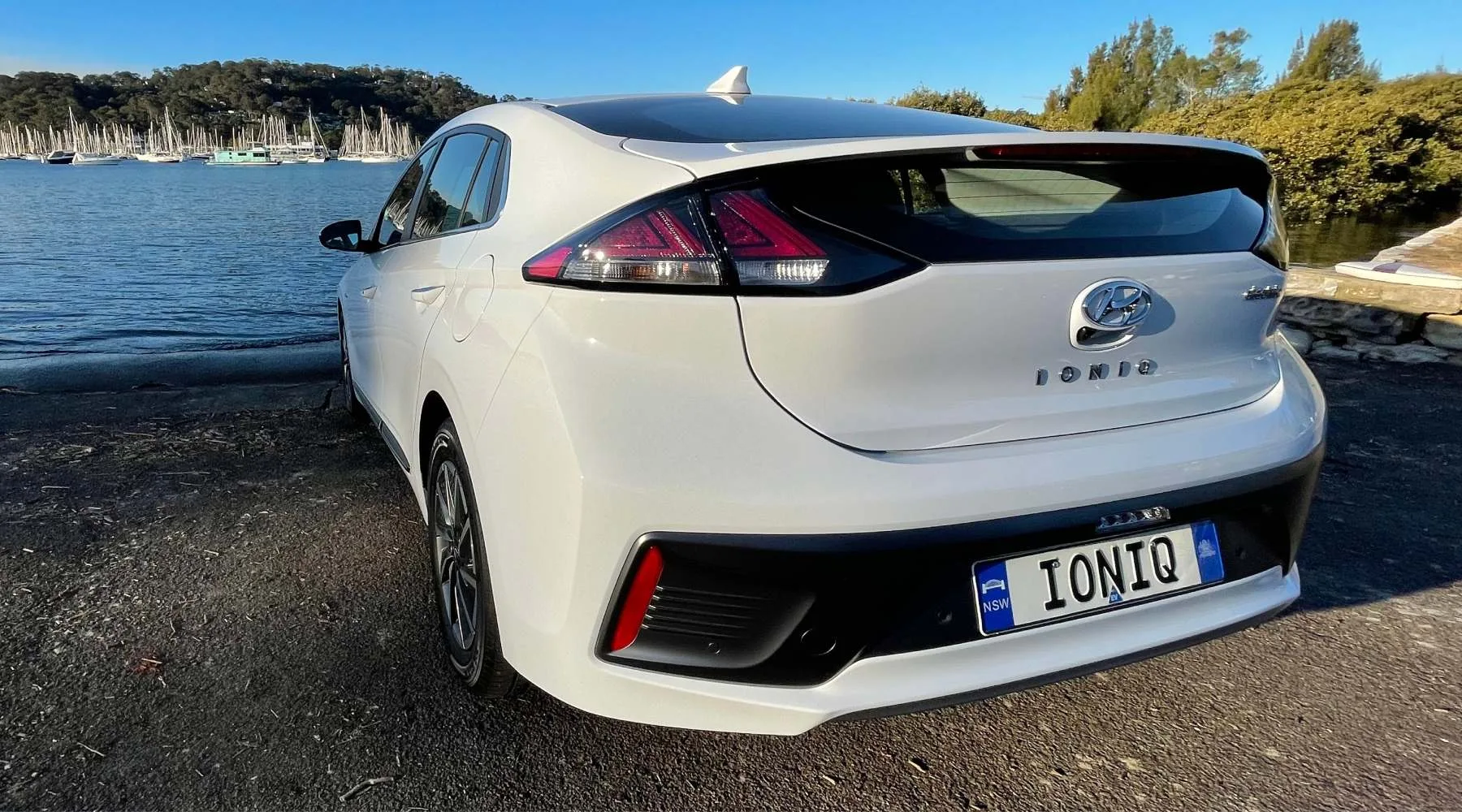
Hyundai IONIQ Electric Elite vs Premium
Outside of the key pillars under the hood, the Hyundai IONIQ has almost all the quality-of-life inclusions we've come to expect from modern cars: a detailed 7" dashboard with a smorgasbord of information to sift through, a steering wheel laden with quick access buttons, USB ports and electric everything.
The base Elite model is given plenty of love. A 10.25" multimedia touchscreen, in-built sat nav, Apple CarPlay and Android Auto support, DAB+ radio, rear view camera, rear parking sensors, automatic headlights and wipers, and 8 speakers. Of course, all the Hyundai SmartSense safety features are included, too.
However, it is missing front parking sensors and electric seat adjustments, which feels like poor form for a car worth over $50K.
The Premium model offers both of these features and more, with some marked improvements for a relatively small upsell of $4,240. The glass sunroof, while small, adds some luxury. You step up to leather appointed seats, the front 2 of which are heated and air-ventilated. You also get a wireless smartphone charging dock in the front console which is surprisingly handy.
There's an integrated memory system for the driver's seat, too. This allows you to switch between 2 presets – a "his" and "hers" setting. Then you get some extra love in the interior trim, such as sports alloy pedals and a satin chrome door frame. In short, plenty to attract you to step up to the Premium.
Neither the Premium nor the Elite offer dual-zone air-con control which, again, is awkward at this price.
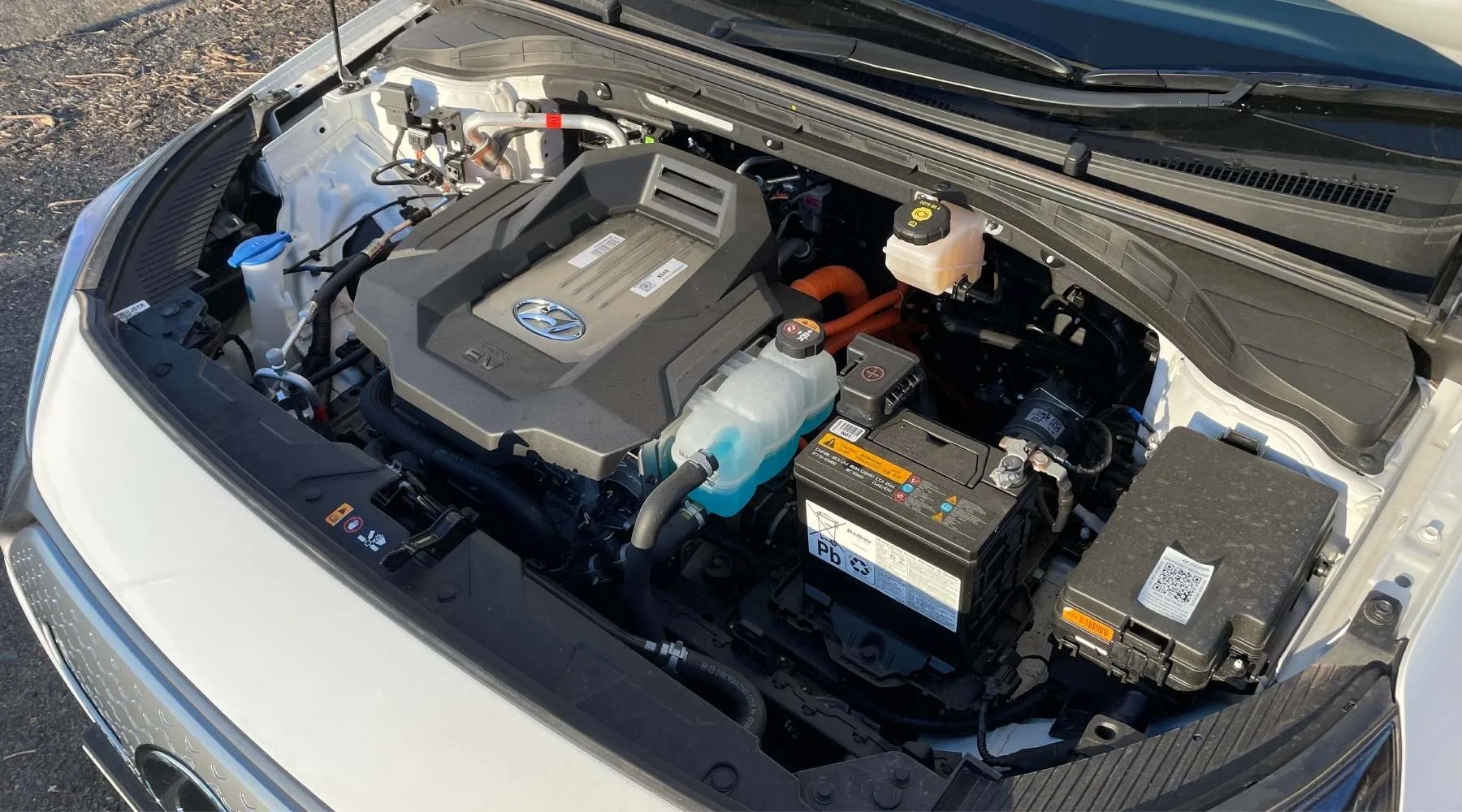
Design
Is it a hatch or is it a sedan? The IONIQ sits somewhere in between. It's more hatch than sedan, but has an elongated tail to it and I really like the resulting shape. The mean-looking front end, which doesn't need the traditional grille due to the lack of a petrol engine, and the back bumper create a sporty feel. Indeed, the sleek LED lights, 16" alloy wheels and low-profile help make the IONIQ a bit of a looker. Visibility out all the windows is great too.
Size is always a big concern for me. At 192cm and 100kg, I'm not always able to physically fit in some vehicles. For me, the Hyundai IONIQ is a tight fit height-wise, there's no doubt. I can feel my hair on the roof touching ever so slightly. But it's not enough to be distracting, so I will give it a pass mark on that front.
In the rear, this is less so. I don't fit at all. Leg space isn't too bad if the passenger can squeeze up to the dash, but height-wise, I don't fit in by a good inch or so. This isn't unusual for me in hatchbacks or sedans that opt for a backwards sloping roof. And how many times, really, do you intend to have a fully grown adult male in the back of your car? But if you've got tall kids or intend to be an Uber driver, it's something to consider.
The Hyundai IONIQ also has a curious boot, perhaps as a side effect of its hatchback-not-hatchback shape. The boot capacity is 462L, which is decent, and it jumps up to 1,417L once you fold the seats down. But it's thin, and the sharply angled rear glass window is restrictive.
Keeping it too simple?
As has become a common complaint for me with electric vehicles, the cable is also stored in an awkward position in a compartment under the boot's floor. This is awkward as you must have an empty(ish) boot to access the cable. There's also little space in there for the Type-2 cable, meaning you must roll it up "just so" to get it to fit.
My main disappointment with the design of the Hyundai IONIQ is that it doesn't really do a whole lot with all the space it has saved by not having an engine. When you see what Volvo is doing with Concept Recharge, you look to the IONIQ and wonder why it, too, hasn't capitalised on the extra space. There isn't even a spare tyre – just a tyre mobility kit that's handy for minor punctures only. Indeed, when you open the bonnet, there is enough space in there to hide a family of possums around the engine. Why not shrink the front end down and provide more cabin space?
There are 5 colour options available: Amazon Grey, Intense Blue, Polar White, Fiery Red and Fluid Metal. It's nice to have such a range of options, although the blue and red they have chosen have a dense, heavy tone to them. (They're not light and bubbly, that's for sure.)
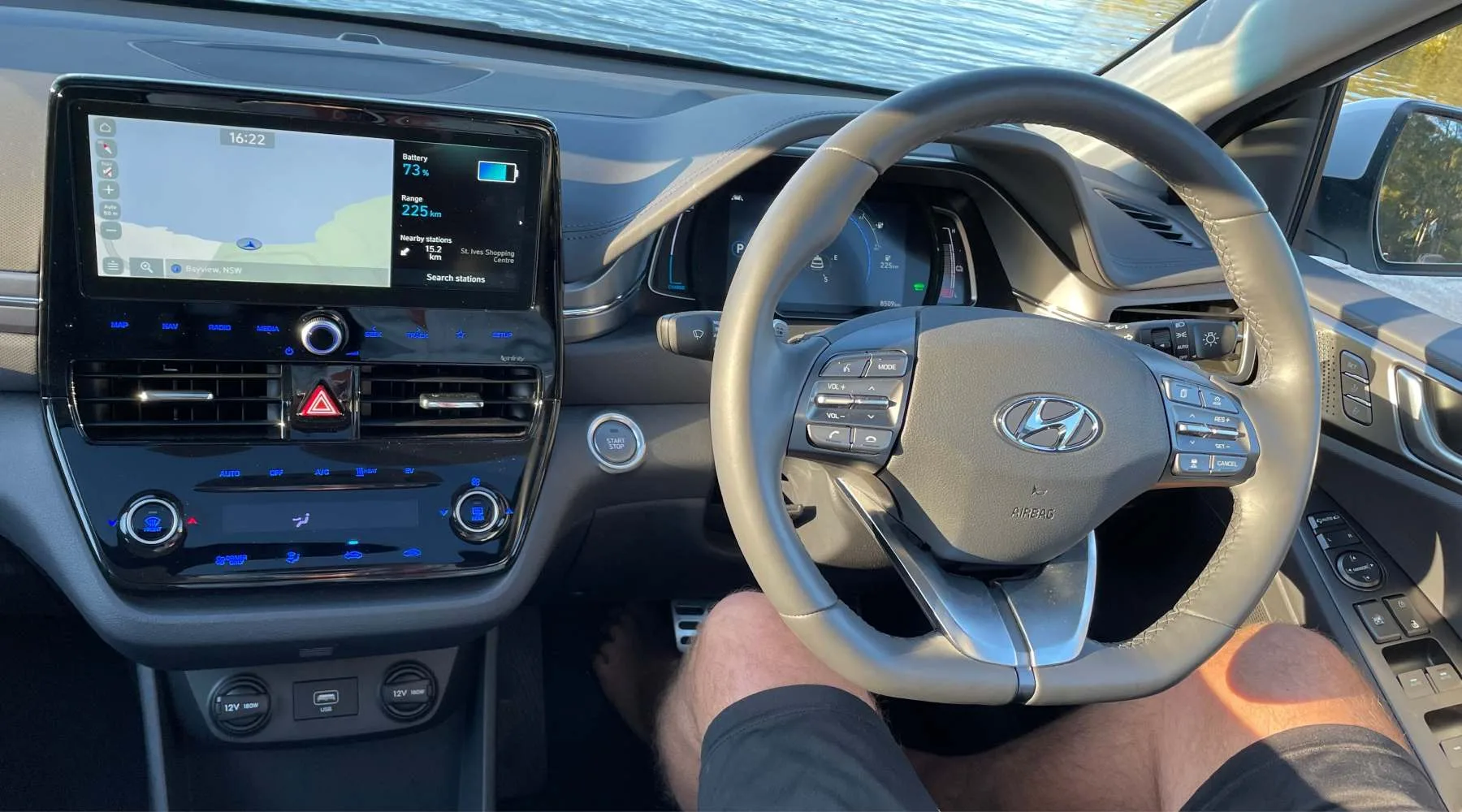
Interior
I reviewed the premium model of the Hyundai IONIQ and there are buttons everywhere. It would take some time to memorise them all and what they do. They're all over the centre console, the steering wheel, the doors and even the roof. At first, it carries across a futuristic feel, but the interior elsewhere leaves a little to be desired.
Even in the Premium model, the seats, steering wheel and trim don't feel overly luxurious. They've got a hard, unforgiving edge to them that could be considered sporty, but I'd argue it is disappointing at this price.
It's not without nice touches. I'm a huge fan of the wireless charging dock for your phone, and the large storage space under the multimedia screen. A few more USBs would have been handy, but there's no shortage of 12V charging options. The glovebox and centre console storage are tight, though.
Multimedia
The 10.25" multimedia screen is a winner. The built-in sat nav offers a 3D landscape to guide you to your destination and it's nice to have DAB+ radio on hand. Connecting my phone was a cinch and playing music directly from it – and answering phone calls – was equally easy. The 8-speaker Infinity sound system delivers plenty of oomph and volume from your phone's media, too, but the radio sounded repressed in this regard.
What I don't like about the multimedia navigation, and indeed the air-conditioner as well, is that it's all push button. There's no physical button to press, which is far more user-friendly in my opinion. As mentioned earlier as well, there's no dual-zone air-con support – also a bummer.
As interior car design goes for cars over the $50K mark, I can't help but feel that the Hyundai IONIQ doesn't do enough to match a feel of luxury to all its features.
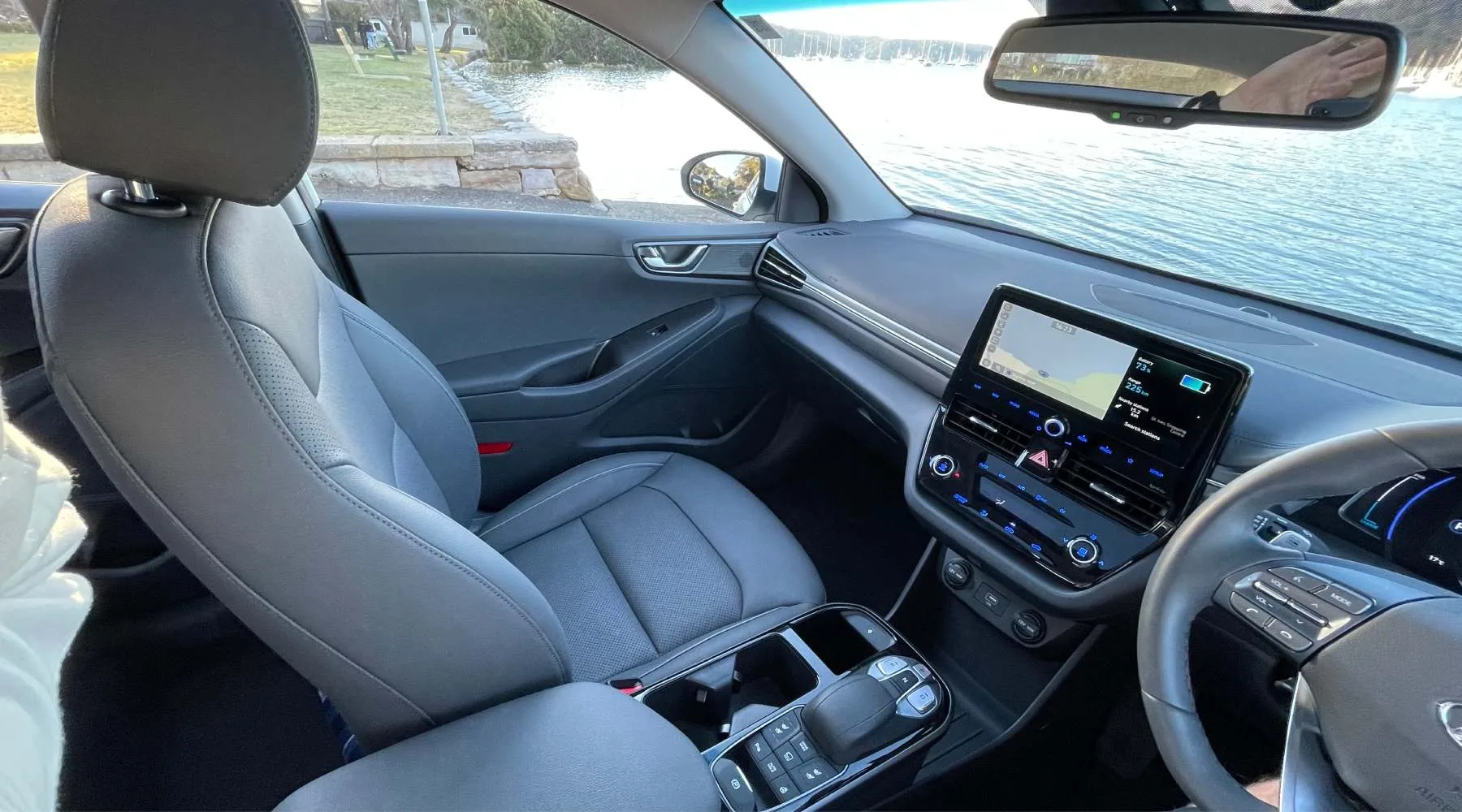
Performance
Absolutely the shining light of the Hyundai IONIQ is arguably its most important feature: performance. This is where I was worried that Hyundai would struggle to give me the guts I want from my automobiles with its electric engine. However, I was pleasantly surprised.
The car's 4 drive modes do make a marked difference on performance. Between ECO+ and ECO, it's marginal, with the former hamstringing your top speed to 90km/h and being ever-so-slightly less gutsy up hills and off the line. As you go through Normal and then into Sport, that grunt up hills picks up in kind.
Where you really feel it, though, is in the acceleration. In Sport mode, there is a real zippiness. I found myself happily commuting in ECO mode, but when I was up for a bit of fun, Sport mode delivers.
The single speed reduction gear system also works a treat. For the first time, it's strange pressing a button instead of moving a gear stick (even if it's an automatic stick). But the transmission seamlessly shifts the car into high speeds. There isn't a noticeable transition point – it indeed feels like a single speed.
Harvesting more battery life
I'm also a big fan of the harvesting system. Its ferocity can be tailored to suit your desire using paddles on either side of the steering wheel, and when I first began testing the Hyundai IONIQ, I was quite taken aback. The car effectively brakes of its own accord when you're not accelerating. Especially if you're coming up to stopped traffic, you barely need to touch the brake yourself.
It feels a lot like clutch braking, but the constant little top-ups it gives the battery are quite rewarding. While my immediate thought was to turn it off, within 15 minutes of driving, I'd fallen in love with the harvesting system. It's oddly cathartic feeling it feed the battery, and having the car guide you up to a red light is surprisingly relaxing.
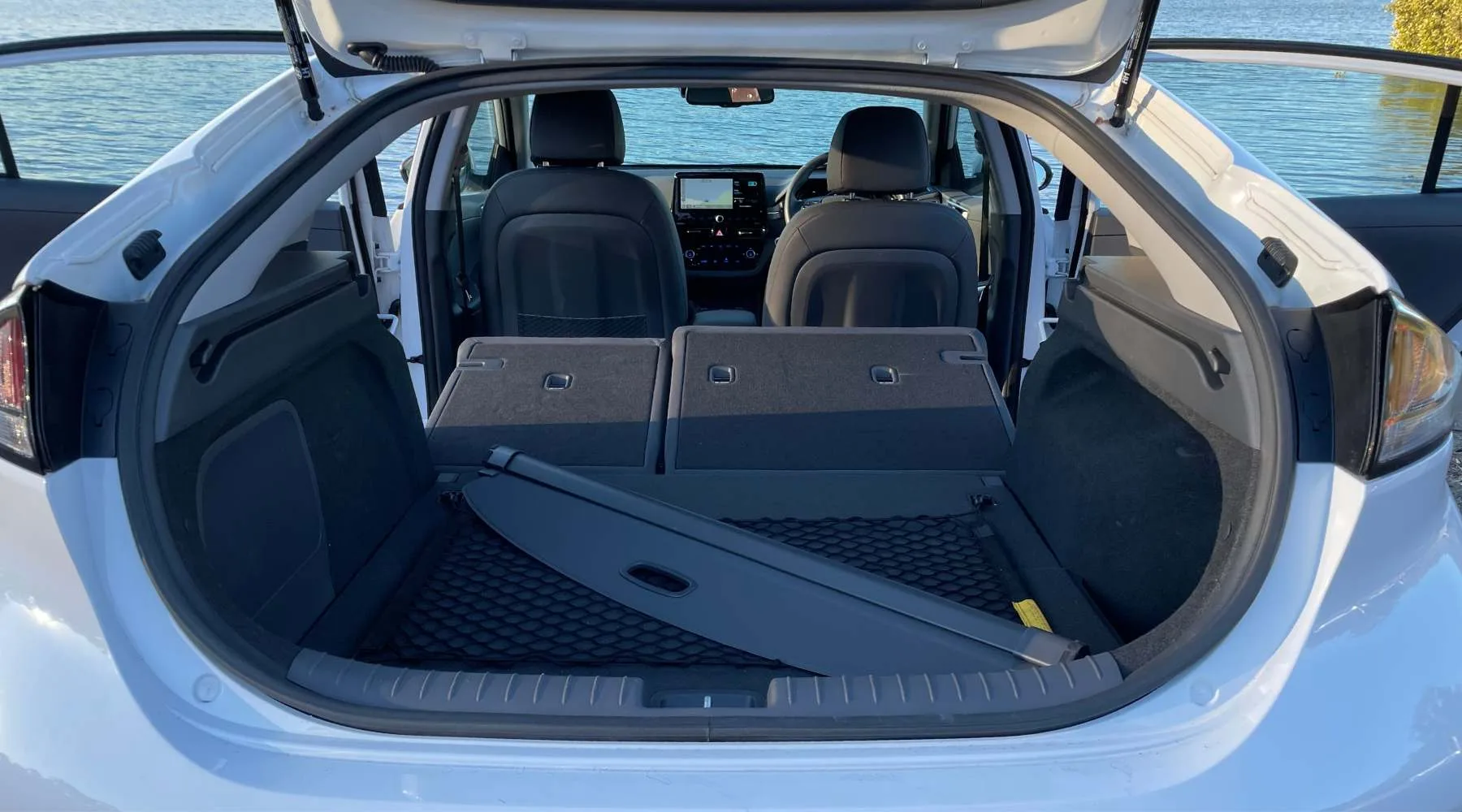
Suspension and Safety
When you start throwing the Hyundai IONIQ around a bit, I wasn't awfully enthused about the suspension. It doesn't stay as stable as you might hope for in a car with this kind of zip, and you feel the imperfections in the road when you hit them at speed. When you consider the asking price, it's fair to have expected better.
I won't go into too much detail about the safety systems. You've really got to be looking hard to spot the difference in the safety features between most modern cars, and even then it's probably a different name for the same thing. Lane keeping assist, lane following assist, blind-spot collision detection, rear cross-traffic collision warning, high beam assist, driver attention warning, smart cruise control and forward collision avoidance assist are the headline acts.
For me, though, it's always about how aggressive these features are. Sometimes you like to lane drift because you can, right? The Hyundai SmartSense system is a little heavy-handed in this regard. It will give the steering wheel a mighty nudge and when it beeps at you, it beeps loud. However, if you burrow into the multimedia screen, there are quite a lot of customisation options, so you can tone it down a bit if that's how you roll.
For families, there are 2 ISOFIX child restraint anchors for rear-facing seats, and 3 traditional anchors for front-facing.

Price
The Hyundai IONIQ Elite starts at $54,514 driveaway, whereas the Premium sits at $58,655. That's a fair mark-up on the like-minded Kona Elite ($35,355) or the i30 N Line Premium ($41,628). You can even pick up a Tucson or Santa Fe SUV for less than the IONIQ.
I can understand how, in the current infancy of the electric car space, the technology comes at a premium price. However, I do think Hyundai could have done more with what's included in that price. There should only be a Premium model and it should be at the Elite's price – with the whole kit and kaboodle in terms of features included. We need the world to go electric, so don't make it difficult.
Verdict
The Hyundai IONIQ succeeds in its goal of being a great hatchback to drive while providing the efficiency and eco-friendliness of an all-electric engine. It's got an attractive profile, too, which retains plenty of visibility for the driver. I'd have liked to have seen the interior feel more luxurious at this price and don't think breaking up the features between 2 models at this price was the best approach.
These quibbles aside, though, if you're looking for the driveability of a hatch and want to put the planet first, the Hyundai IONIQ was a surprising find for me, and well worth a test drive.
Your reviews
Chris Finder
Editor
You are about to post a question on finder.com.au:
- Do not enter personal information (eg. surname, phone number, bank details) as your question will be made public
- finder.com.au is a financial comparison and information service, not a bank or product provider
- We cannot provide you with personal advice or recommendations
- Your answer might already be waiting – check previous questions below to see if yours has already been asked
Finder only provides general advice and factual information, so consider your own circumstances, or seek advice before you decide to act on our content. By submitting a question, you're accepting our 1. Terms Of Service and 6. Finder Group Privacy & Cookies Policy.
This site is protected by reCAPTCHA and the Privacy Policy and Terms of Service apply.

